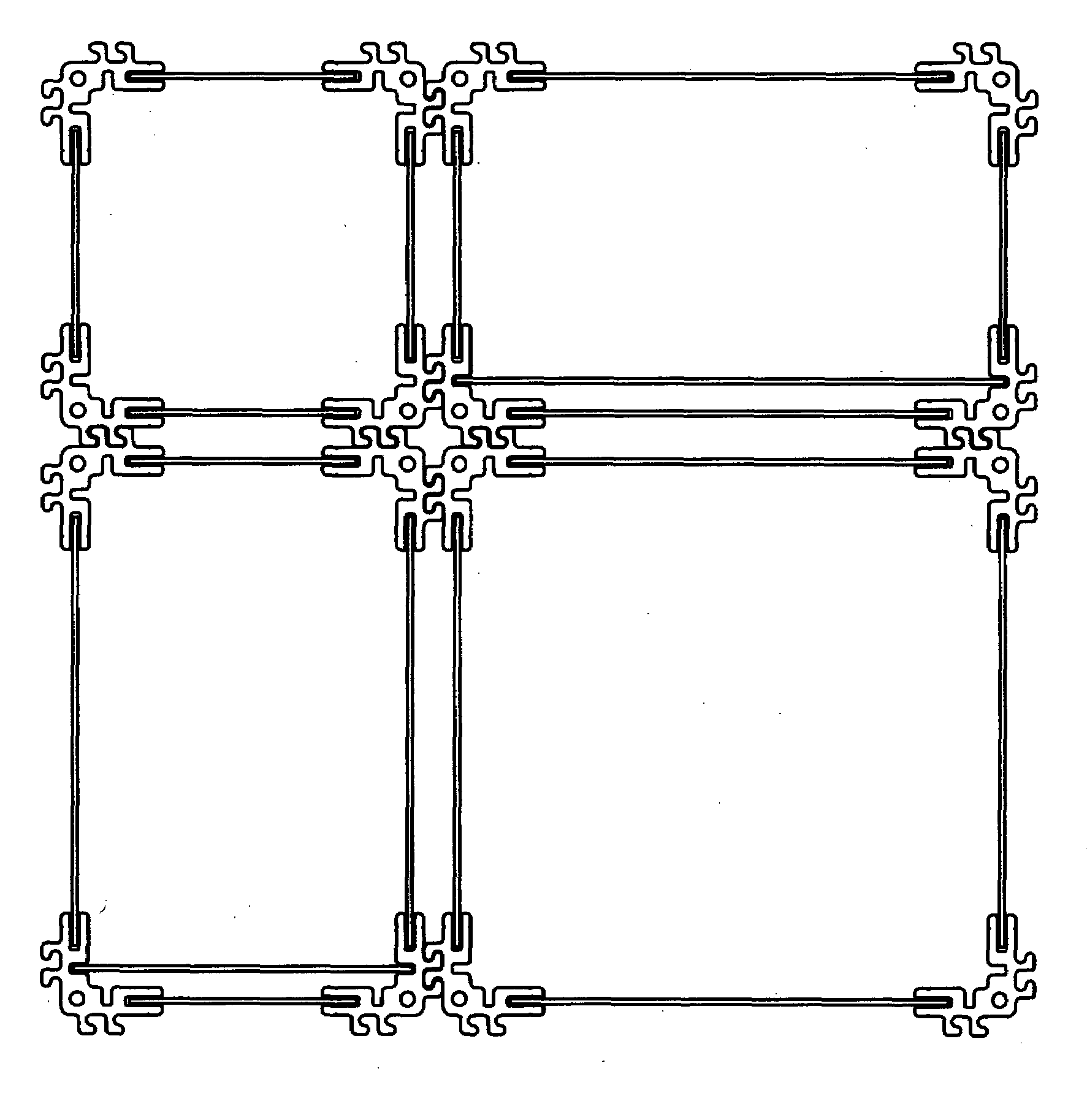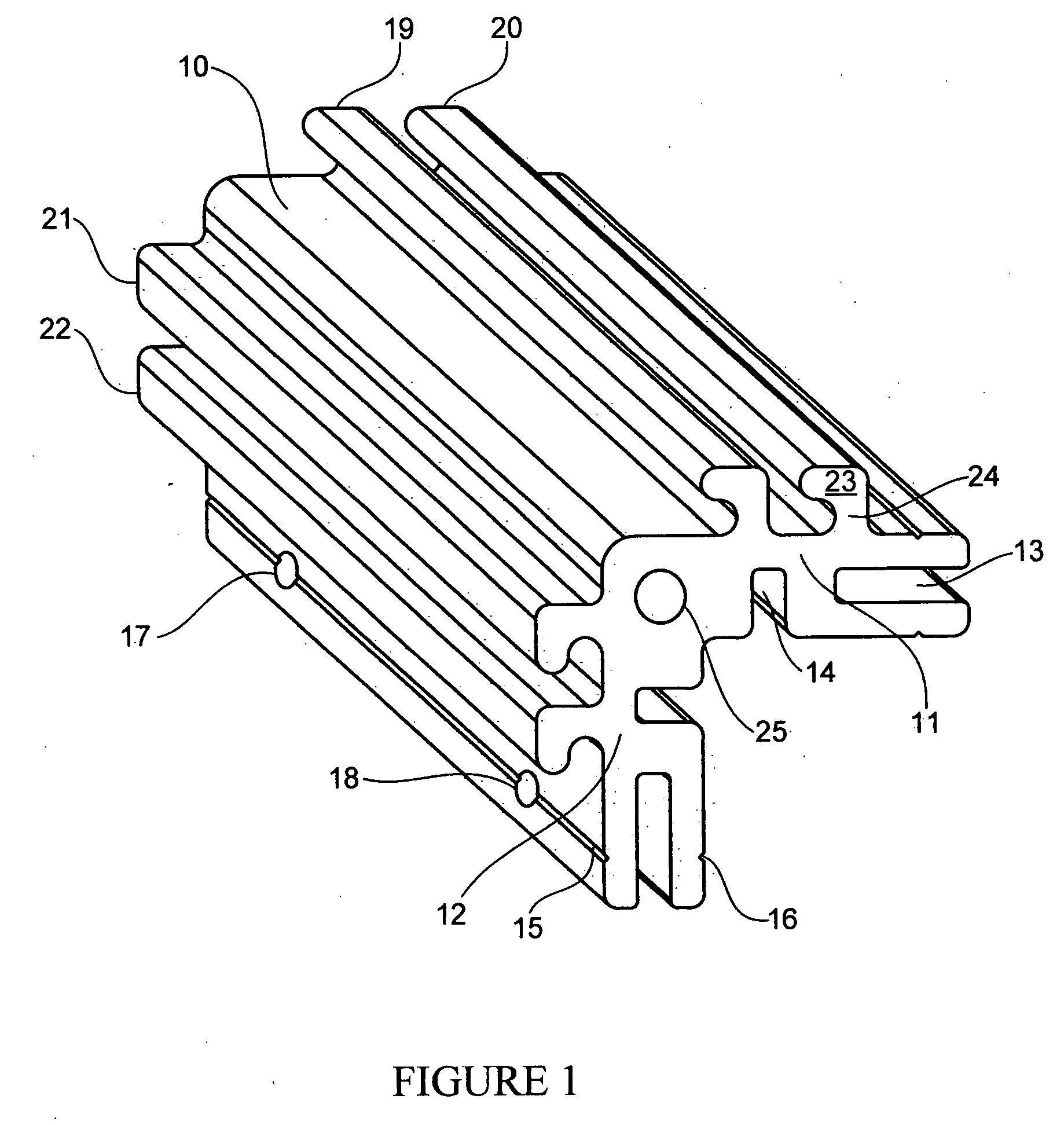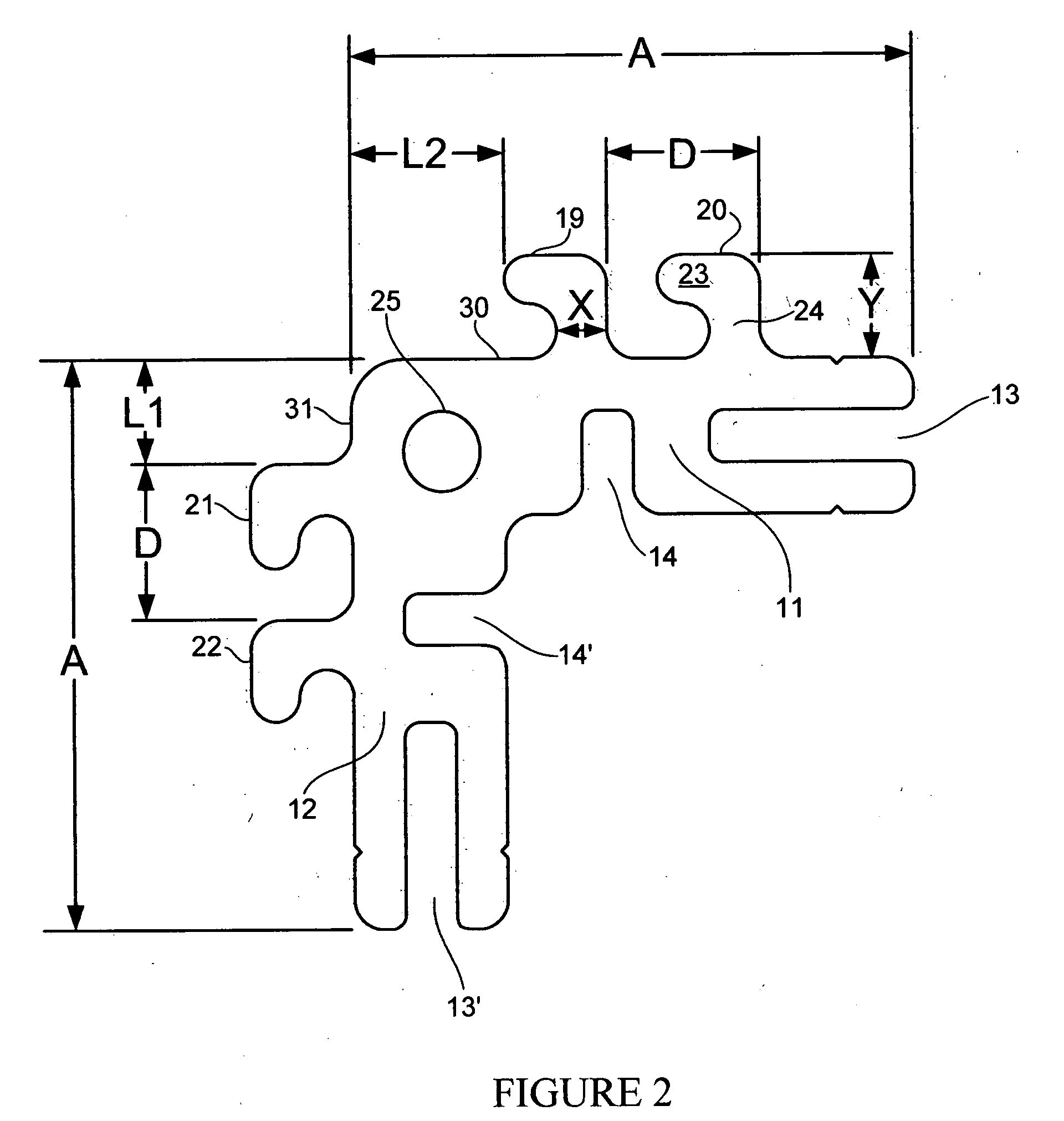Interlocking structural element for cabinets and enclosures
a structural element and enclosure technology, applied in the field of structural elements, can solve the problems of requiring welding, limited use of such enclosures, and fabricating custom enclosures, and achieve the effect of rapid cabinet fabrication
- Summary
- Abstract
- Description
- Claims
- Application Information
AI Technical Summary
Benefits of technology
Problems solved by technology
Method used
Image
Examples
Embodiment Construction
[0026]The present invention comprises a structural element which can be used to fabricate cabinets and enclosures with one or more compartments. The element is an elongated member with at least two surfaces and means for interlocking two elements together. Such means are typically comprised of elongated protrusions on the outer surfaces of each flange, shaped and positioned for proper interlocking.
[0027]The preferred embodiment of a structural element in accordance with the invention is shown in FIG. 1. The structural element 10 is used in the corner of the compartment or cabinet and accordingly has a top flange 11 and a side flange 12 which are at approximately a right angle to each other.
[0028]Each flange incorporates two slots 1314 for a total of four slots. One slot 13 is parallel to the plane of the flange. The second slot 14 is perpendicular to the plane of the flange. The parallel slots are used to fix the side panels of the enclosure, while the perpendicular slots are used t...
PUM
| Property | Measurement | Unit |
|---|---|---|
| Length | aaaaa | aaaaa |
| Angle | aaaaa | aaaaa |
| Size | aaaaa | aaaaa |
Abstract
Description
Claims
Application Information
 Login to View More
Login to View More - R&D
- Intellectual Property
- Life Sciences
- Materials
- Tech Scout
- Unparalleled Data Quality
- Higher Quality Content
- 60% Fewer Hallucinations
Browse by: Latest US Patents, China's latest patents, Technical Efficacy Thesaurus, Application Domain, Technology Topic, Popular Technical Reports.
© 2025 PatSnap. All rights reserved.Legal|Privacy policy|Modern Slavery Act Transparency Statement|Sitemap|About US| Contact US: help@patsnap.com



